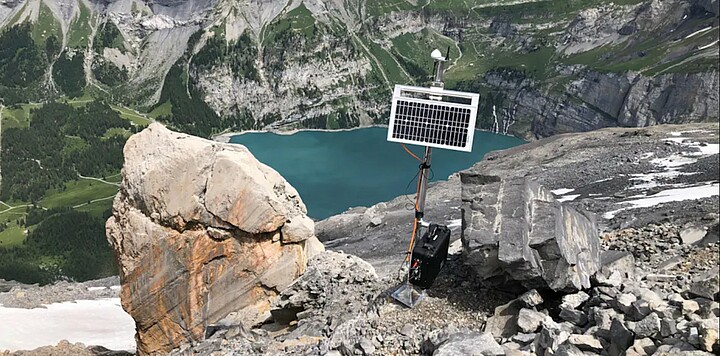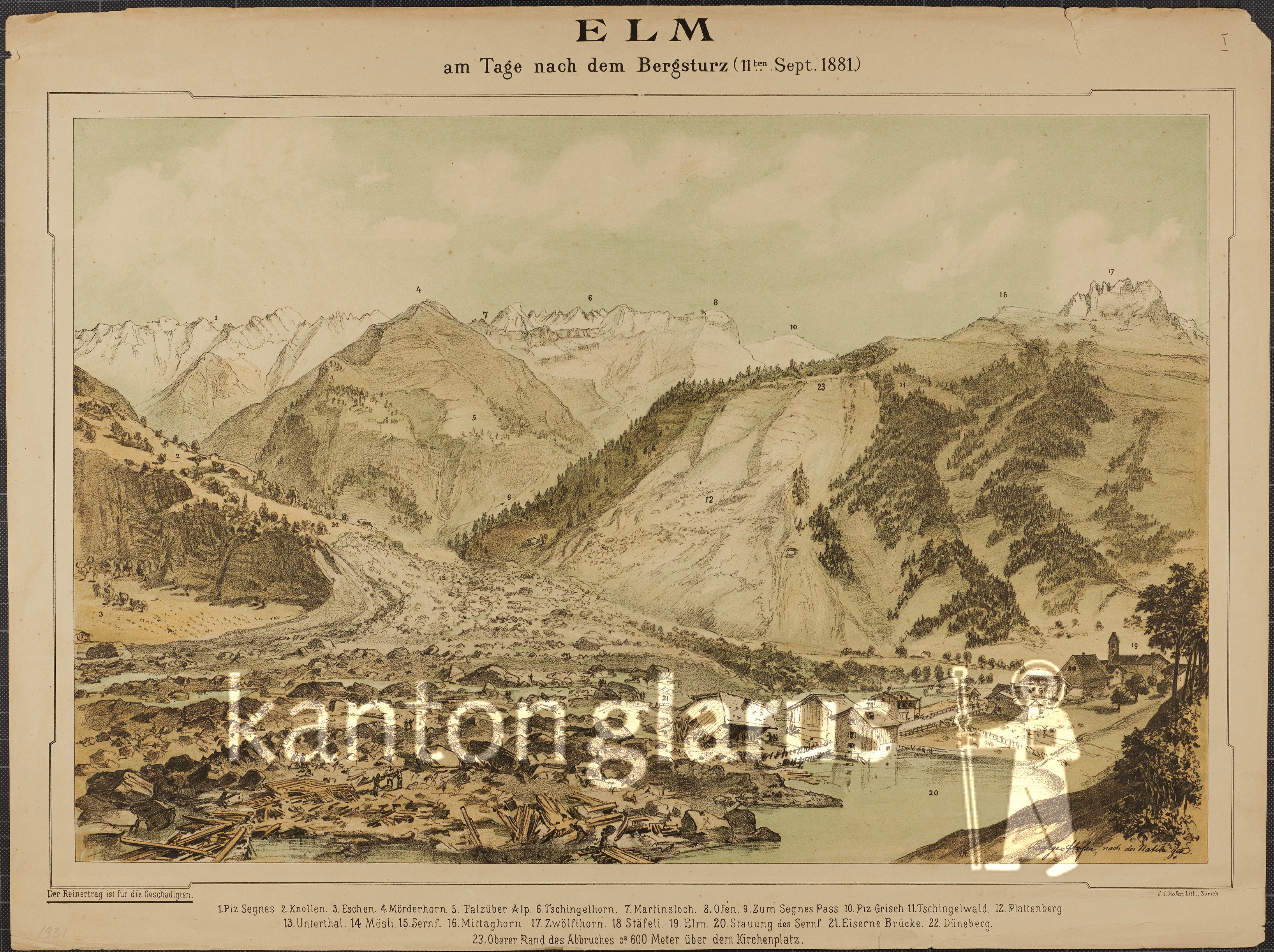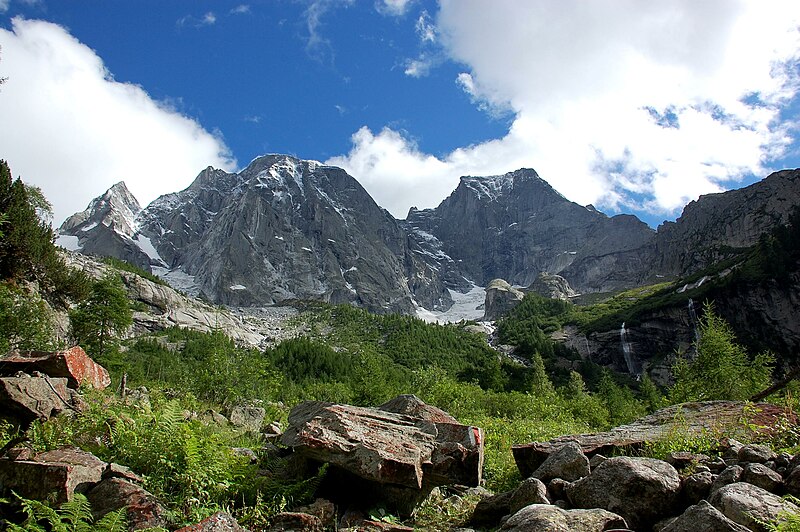In steep and rocky areas, blockfalls and rockfalls, rockslides (over 100 m3) or even landslides (with a rock volume of over one million m3) can occur. These processes are by no means limited to the mountains: this danger must be reckoned with wherever rock and rock formations appear on the surface. Large rockfalls and landslides are usually signalled in advance by increased rockfall activity.
The annual financial damage caused by falls is hardly significant in Switzerland. However, due to the usually strong impacts, they can have very drastic effects locally. Certain areas may not be populated due to the hazard, others must be temporarily evacuated (as in Brienz, GR in 2023) or - if no other option is available - permanently relocated (as in Horlaui, Weggis, LU in 2014). Infrastructure facilities such as roads and railway lines are often affected by rockslides and rockfalls.
Monitoring and early warning

Monitoring and early warning
Monitoring and early warnings primarily serve to ensure personal safety by evacuating the population from the danger zone in good time. Alternative transport routes are important for the infrastructure in the event of a closure. As it is usually not possible to avoid the fall processes, this leads to significant indirect costs (such as the temporary closure of the Gotthard A2 motorway).
Effective measures
Effective measures
The risk of rockfall can be minimised by protective forests and technical measures. In the case of rockfalls, these measures are significantly more expensive, more complex or cannot be implemented at all. In the case of rockfalls, there are not many options left to influence the process itself. Therefore, in terms of integral risk management, the focus is not on reducing the hazard alone, but on recording, assessing and controlling the risk - also in terms of a cost-benefit analysis - accompanied by an active risk dialogue. Examples of measures include
Spitze Stei: large-scale monitoring and structural measures
Above Kandersteg (BE) lies the unstable mountain flank ‘Spitze Stei’, which has been moving strongly for several years at a rate of several metres per year. As a result, there is not only frequent rockfall, but also the threat of large rockfalls of 100,000 to several million cubic metres - with debris flows posing a secondary danger. Since 2018, the movements have been monitored and measured using various instruments. To protect the settlement area below, a damming system and a debris deposit site were built in 2020 as an emergency measure. The municipality provides specialist information and publishes a bulletin at least once a week.









